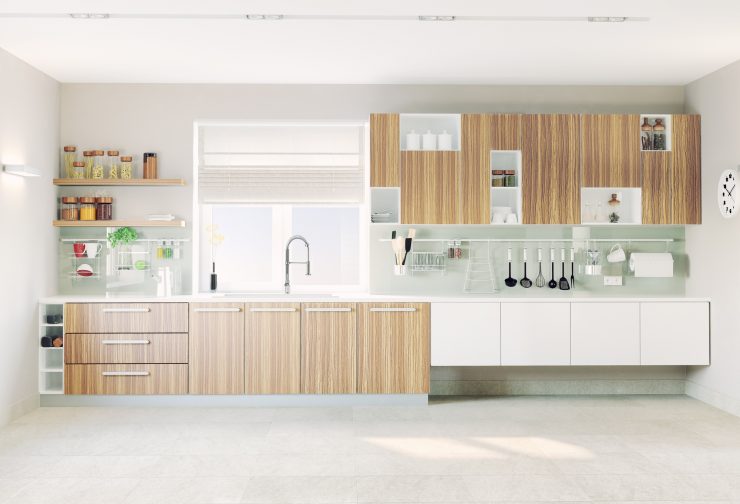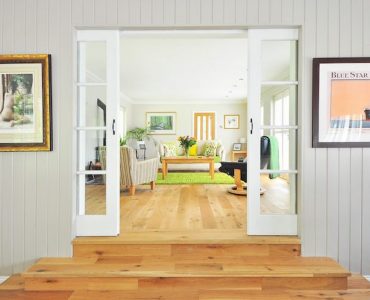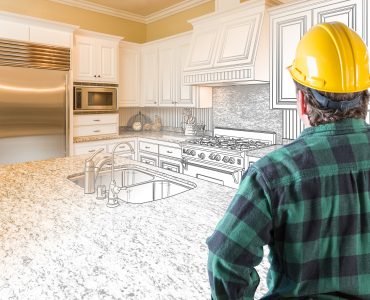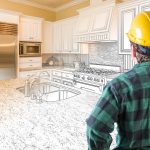When you’re dealing with kitchen remodeling for the first time, you need to have a clear idea about the basics of what’s involved before you start. Which are the most important elements to consider? What’s worth serious investment and where can you get away with spending a little less? What can you reasonably do for yourself, where can furniture stores help you out, and when do you need specialist help?
There are usually two reasons for a kitchen redesign: making it look more pleasing and getting more out of it. Appearance is something you can work on as you go along – first and foremost by making sure that none of your materials or appliances clash – so the place to start is by thinking about use. This varies from one household to another. Your choice of design is likely to be influenced by the size of the room, the size of your family, whether or not you have pets, and how much you like to cook. With this in mind you’ll need to plan out the layout to make room for activities like cooking and dining and to make sure you have plenty of space to move around safely.
Once you’ve establish the basic layout you want, you’ll need to consider materials and appliances. Obviously flooring will need to go down first and you’ll need to give priority to materials you can easily keep clean and hygienic, at the same time as finding something you like the look of. Bear in mind that choosing a neutral color for the floor will give you the option of changing other colors in the room more easily in future without going through the full process of kitchen remodeling again.
Choosing one or two really high quality appliances for your kitchen doesn’t just make it a better place for you in the immediate term, it also tends to raise the value of your house. It’s worth thinking about from a long term perspective because you’ll save money over time by scouring the internet and your local furniture store for appliances that are built to last. Remodeling kitchens presents the perfect opportunity to do this. Just remember that better doesn’t always mean bigger. Fridges and freezers, for instance, will run more efficiently if kept full most of the time. Instead, spend your money on good engineering and good energy ratings.
It’s useful to take a similar approach when thinking about materials. Solid wooden cabinets may cost a bit more but they’re much more hardwearing that MDF so they’ll keeping looking good for longer. Glass fronted cabinets may look stylish, but a lot of foods deteriorate and lose flavor if exposed to light, so before you invest in them, think carefully about what they’ll be used for. Remember that highly stylized cabinets can mean there are lots of places for dirt to build up (if you’re cooking properly there will often be particles of food in the air), while smooth, factory-made cabinets tend to be easier to wipe clean.
Granite or marble counter tops look beautiful but will quickly blunt knives if you chop on them directly. Most chefs prefer steel counter tops, which don’t have that problem and are easy to sterilize. Wooden ones make the kitchen look lovely and cozy but require a lot of looking after and are not the best option from a hygiene perspective. Synthetic ones can actually look quite good and are easy to keep clean, but you can’t chop directly onto them without damaging them.
When remodeling kitchen spaces where there’s not much room for extras, you need to think about how furniture can multitask. If your counters are full up with small appliances like microwaves and toasters, a pull-out shelf can provide useful extra space for food preparation – just take extra care to make sure it’s sterile before sliding it away. A fold-out table is a good choice for creating either work space or dining space as required. Stackable stools or chairs provide seating but can be kept out of the way when space is at a premium. Pots, pans, and gadgets like whisks and ladels can be hung from the walls to save cabinet space, or you can use a pull-down rack to similar effect.
Finally, when you’re remodeling your kitchen you should always think about light sources, both natural and artificial. This not only helps you to direct light where it’s needed for doing delicate work – it makes your kitchen a brighter, warmer-looking, happier place to be.













